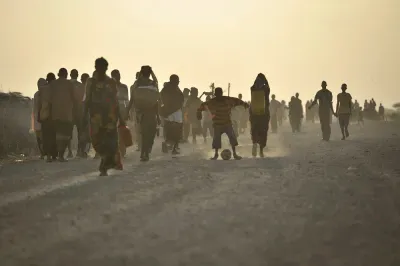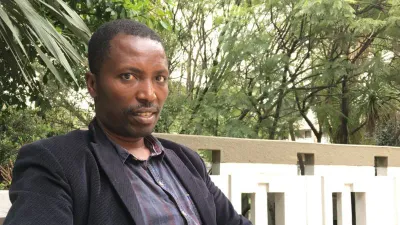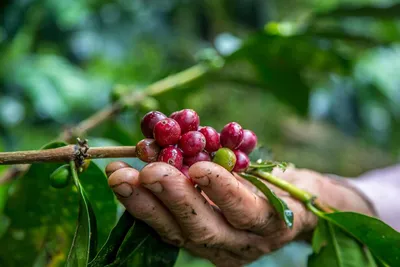How TPLF created the OPDO

Meles Zenawi and Seyoum Mesfin toast with Russia’s President Vladimir Putin; Abadula Gemeda and Girma Biru observe from the sidelines.
Since 1974, a military junta known as the Dergue ruled Ethiopia, when it was part of the socialist states allied with the former Soviet Union, with an iron fist. The junta was locked into a life-and-death tug-of-war with three liberation groups. The most lethal, the Eritrean People’s Liberation Front (EPLF) fought to break the Eritrean Red Sea coast from Ethiopia and form an independent state of its own. This conflict had been going on for three decades.
Further south, Ethiopian troops battled the Tigrayan People’s Liberation Front (TPLF) whose goal was ending the political domination of the Amhara, Ethiopia’s historical rulers, and restoring autonomy for ethnic Tigrayans. The Oromo Liberation Front (OLF), the third rebel group, operated both in the east and west of the country with objectives that alternated between seeking autonomy for the Oromo and forming an independent Oromia Republic. While they were fiercely independent and jealously guarded their autonomy from it, both TPLF and OLF largely tended to see EPLF as their elder brother and mentor.
Their opposition to the Dergue united the three rebel groups. But they were not on the same wavelength. While comprised predominantly of ethnic Tigrayans, the EPLF and TPLF didn’t always see eye-to-eye on many things other than defeating the massive Dergue army, by then Africa’s largest. Numerous attempts to form an alliance between OLF and TPLF, both left-wing movements, failed to materialize. Whereas the latter was fervently communist, in the mold of former Albanian strongman Enver Hoxha, the former was communist in name only and gave primacy to Oromo nationalist ideology.
Toward the end of 1985, TPLF dispatched a company of its elite troops to OLF’s western front ostensibly to exchange best experiences thereby improving relations. However, it instead ended up unraveling the already sore relationship when the unit was discovered trying in vain to covertly recruit OLF members into a rival faction paying allegiance to TPLF’s strictly Marxist and Leninist line.
The relationship between EPLF and OLF remained relatively more cordial. Like OLF, EPLF had also soured on Marxism-Leninism. Besides, the two operated geographically far from each other and didn’t have the love-hate rivalry of cousins that defined TPLF-EPRDF relations. But their relationship wasn’t necessarily free from mistrust emanating from EPLF’s ethnic and cultural affinity with TPLF.
By the end of the 1980s, EPLF and TPLF had shattered the backs of the Dergue army and were contemplating the end game. OLF was just beginning to warm up, growing its support, and applying pressure, after a series of setbacks, both internal and external, that decimated its founding leadership. Contrarily, having overrun the Tigray province in a stunning offensive in 1989, TPLF had set its eyes on the ultimate prize: Capturing Addis Ababa, Ethiopia’s capital. To reach Addis, however, it had to cross the vast Amhara and Oromo-inhabited provinces to the south, both hostile territories.
To overcome this hurdle, TPLF first co-opted and brought under its wings the Ethiopian People’s Democratic Movement (EPDM), later christened in 1994 as the Amhara National Democratic Movement (ANDM), the current ruling party in the Amhara State. While operating in Amhara-inhabited provinces adjacent to Tigray, EPDM billed itself as a multinational party.
TPLF and EPDM together formed EPRDF in early 1989. With this outfit, TPLF could now cross into the Amhara-speaking provinces on the backs of EPDM. But what to do about the Oromo?
Having failed to woo the OLF, TPLF scoured the world for Oromo “Democrats,” to use the former president of Tigray Region, Gebru Asrat‘s word― willing accomplices who could form a party loyal to TPLF and rival to OLF. 1 Asrat, G. (2014). Sovereignty and democracy (in Amharic), Signature Book Printing Press. Gebru Asrat, a long-time TPLF leader, was the chief administrator of the Tigrean National State from 1994-2001.
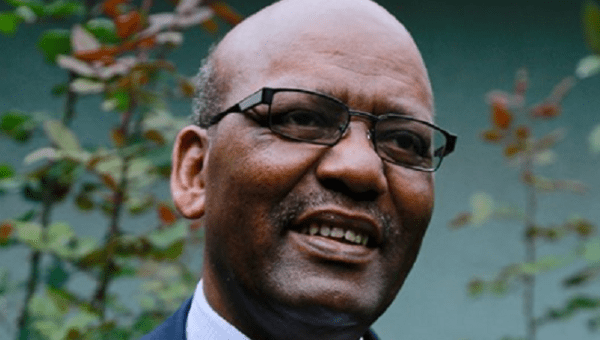
TPLF spread its nets as widely as Europe and North America looking for Oromo allies. But it could only catch one fish: Dr. Negaso Gidada, one of the many future nominal presidents doting EPRDF’s 27-year reign. Given his rebellious personality and shifting loyalty, Negaso carried little influence among the Oromo at home and abroad. Curving a space in the Oromo intellectual camp fertile to TPLF’s dream of restoring unrivaled Tigrayan dominance over Ethiopia, a dominion lost with the demise in 1889 of Emperor Yohannes IV, was proving a difficult task.
Previously, EPDM had reached out to the princely EPLF, the rebel par excellence, for technical support. The Secretary-General of EPLF at the time, Ramadan Mohammed Nur, proposed two solutions. First, for EPDM to have its own presence, separate from TPLF’s, outside Ethiopia. Second, Ramadan offered to hand over POWs under its captivity. In its 30-year war with Addis Ababa, EPLF had thousands of such captives and it kept them fed, clothed and sheltered in the arid and mountainous environment where it was garrisoned — a Herculean task.
Consequently, EPLF supplied about 300 lower-level Dergue military officers from captivity to EPDM in two consecutive batches. Most were of Oromo descent, while others were ethnic Amhara who were born in Oromia and spoke Afaan Oromo. An intelligence cable from the US embassy in Addis Ababa for instance reveals the real name of Kuma Demeksa, the former president of Oromia, to be Taye Teklehaimanot. “Kuma” was born in Gore, Illubabor province, to Amhara parents in 1958. He joined the Derg special police force in the early 1970s and was captured by the EPLF while serving in Eritrea.
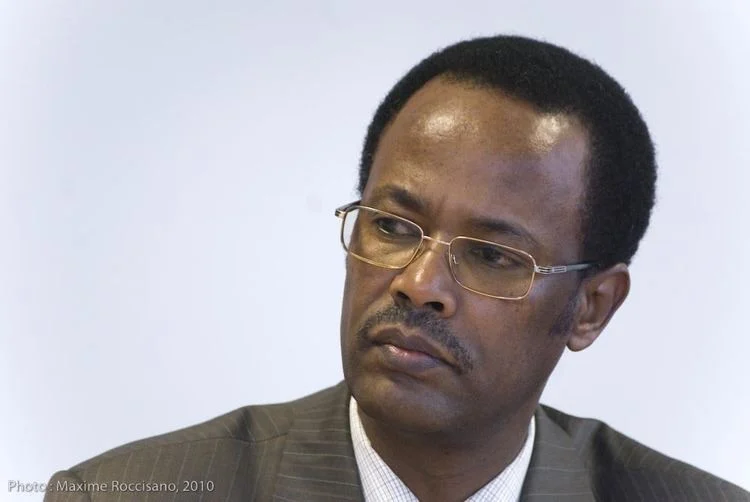
TPLF’s intelligence arm had a daunting problem at hand: How to march into the vast Oromo land without local eyes and ears. That is when Kinfe Gebremedhin, the late head of Ethiopian intelligence, who was assassinated in 2001 after a bitter fallout within TPLF, stumbled upon a breakthrough: Why not mold the former EPLF captives, then operating with EPDM, into a separate Oromo organization?
That is how OPDO came to be founded in late 1989. For the most part, it was made to copy watered-down versions of OLF’s political program. To distinguish it from OLF, OPDO was made to advocate for Oromo rights within the context of the Ethiopian state, which was palatable given their previous service to the country, thereby distancing OLF as a separatist movement. And OPDO immediately joined the EPRDF coalition. OLF vigorously protested against what it saw as a betrayal, repeating a familiar pattern of duplicity that so often characterized the Oromo-Amhara-Tigrayan efforts at the alliance. It pleaded with EPLF to avert internecine war within the anti-Dergue camp.
During one mediation effort, held in Sen’afe, Eritrea, Meles Zenawi, Ethiopia’s future Prime Minister, offered to disband OPDO and hand them over to its nemesis, the OLF. Caught off guard by the unexpected concession, the OLF delegation led by Lencho Leta, already used to Zenawi’s theatrical performances, first gave out a poker face. Come the morning, Zenawi’s colleagues, including Siye Abraha, Ethiopia’s future defense minister, had talked him out of the “crazy” idea.
During the transition period, TPLF watched, not impartially, as OLF and OPDO battled for the hearts and minds of the Oromo. 2 Meles Zenawi used to remark that OPDO was like a scratch-off lottery ticket: You scratch an OPDO and you are sure to find a disguised OLF. It soon dawned on it that OPDO had no chance against OLF in this effort. Consequently, TPLF brought in its military muscle on the side of OPDO, forcing OLF to leave the transitional arrangement in July 1992 and subsequently resume the armed struggle.
Footnotes
We need your support
We trust you found something of value in this article. If so, we kindly ask you to consider helping Curate Oromia continue its work.
If you believe in the importance of independent voices and honest reporting, we invite you to support our efforts through our GoFundMe campaign.
Every contribution, however small, goes directly to our writers and the expansion of our reach.
Thank you for your support.

